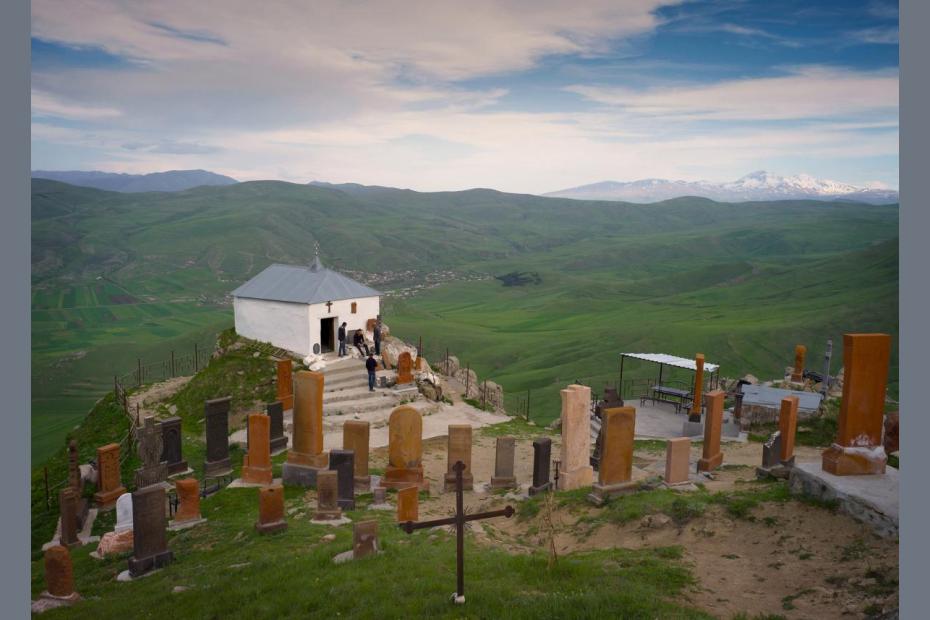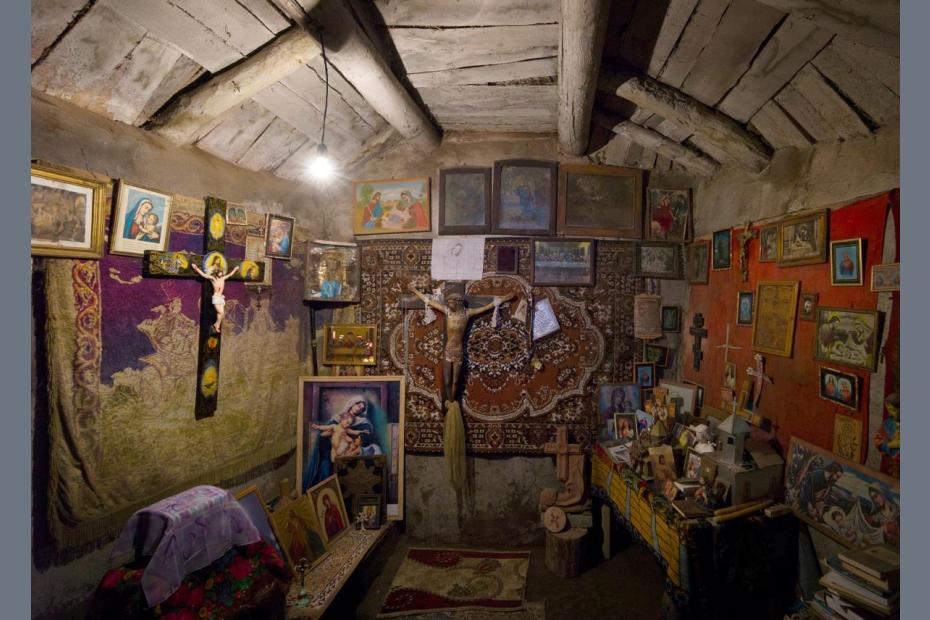Armenians foster many beliefs and customs which do not fit in the official religiosity “as prescribed” by the Church. Common — Apostolic and Catholic — Armenian Christianity falls within general frames set, on the one hand, by belief in prophetical properties of dreams and, on the other, by an emphasis on the sensual and material aspect of relationship with the sacred. In the Soviet times, when communist authorities were more concerned with controlling and persecuting religious institutions than with “superstitions and survivals,” as they were dubbed by official propaganda, vernacular religion rose in importance.
Despite the recent reinstitution of church structures, unofficial places of worship have retained their popularity and are visited both en masse during seasonal pilgrimages and individually in times of difficulty and need. The Surb Hakob (St. James) chapel in the village of Arevik, Armenia, is set up in an old house, typical of traditional Armenian rural architecture. The chapel’s interior is adorned with gifts offered by the faithful: paintings, carpets, embroidered scarfs, crosses and religious books. The Surb Hovhannes (St. John the Baptist) chapel is situated on a mountain top east of the city of Gyumri. One of the most popular pilgrimage destinations in Armenia, it is revered by Apostolic and Catholic Armenians alike, especially by childless couples seeking the saint’s help and intercession. In the recent years, the chapel has been surrounded by votive khachkars (cross-stones), founded by the pilgrims.

